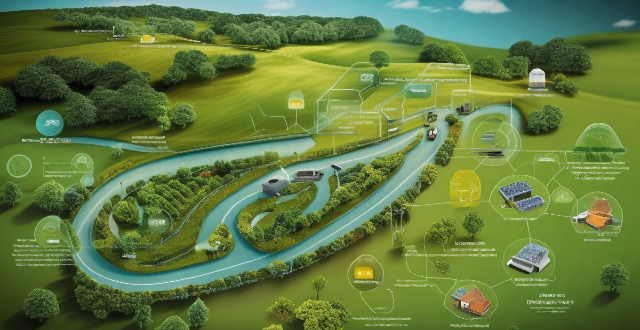Smart grids, through their advanced digital communication technology, play a pivotal role in enhancing energy efficiency. They achieve this by optimizing power generation and distribution, managing energy consumption effectively, improving system reliability, encouraging sustainable practices, and leveraging data analytics. Features like demand response, distributed generation, smart meters, load balancing, peak shaving, self-healing capabilities, predictive maintenance, dynamic pricing, and electric vehicle integration contribute to these efficiency improvements. As we move towards a more connected future, smart grids will continue to drive efforts towards a more energy-efficient global landscape.

How Do Smart Grids Help in Achieving Better Energy Efficiency?
Smart grids are an advanced form of electrical grid that utilize digital communication technology to monitor and manage the flow of electricity from power plants to consumer appliances. They play a crucial role in achieving better energy efficiency by incorporating several innovative features and technologies.
1. Optimized Power Generation and Distribution
Smart grids optimize the generation and distribution of power by using advanced algorithms and machine learning techniques. This ensures that the right amount of electricity is generated and distributed to meet the varying demands of consumers, thereby reducing wastage and improving overall energy efficiency.
- Demand Response: Smart grids can adjust the demand for electricity based on real-time data, allowing for more efficient use of resources.
- Distributed Generation: The integration of renewable energy sources like solar and wind into the grid helps balance supply and demand, further enhancing energy efficiency.
2. Energy Management and Conservation
Smart grids enable better energy management and conservation through various means:
- Smart Meters: These devices provide detailed information about energy consumption patterns, enabling consumers to make informed decisions about their usage habits.
- Load Balancing: By distributing the load evenly across multiple sources, smart grids ensure that no single source is overburdened, leading to increased efficiency.
- Peak Shaving: Smart grids can reduce peak demand by shifting non-critical loads to off-peak hours, thus saving energy.
3. Improved Reliability and Resilience
Smart grids improve reliability and resilience by detecting and responding quickly to outages or other issues within the system. This reduces downtime and ensures that energy is used more efficiently.
- Self-Healing Capabilities: Smart grids can automatically reroute power around damaged components, minimizing disruptions and maintaining optimal energy efficiency.
- Predictive Maintenance: Through constant monitoring, potential problems can be identified before they cause significant damage, reducing energy losses due to unplanned outages.
4. Encouragement of Sustainable Practices
By providing incentives for sustainable practices, smart grids promote energy efficiency among consumers.
- Dynamic Pricing: With dynamic pricing models, consumers are encouraged to use less electricity during peak times when prices are higher, promoting energy conservation.
- Electric Vehicle Integration: Smart grids facilitate the integration of electric vehicles (EVs) into the system, which not only reduces greenhouse gas emissions but also allows for vehicle-to-grid (V2G) capabilities where EV batteries can store excess energy produced during off-peak hours and release it back into the grid during peak demand periods.
5. Enhanced Data Analytics and Visualization
Smart grids generate vast amounts of data related to energy production, distribution, and consumption. Advanced analytics tools help in visualizing this data effectively, enabling stakeholders to identify areas for improvement in terms of energy efficiency.
In conclusion, smart grids play a vital role in achieving better energy efficiency by optimizing power generation and distribution, managing energy consumption effectively, improving reliability and resilience, encouraging sustainable practices, and leveraging enhanced data analytics and visualization. As we move towards a more connected and digital future, smart grids will continue to be at the forefront of efforts to create a more energy-efficient world.